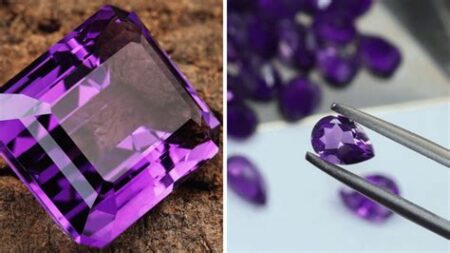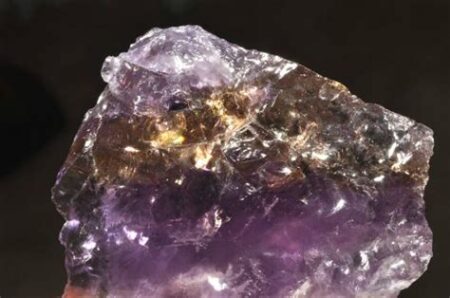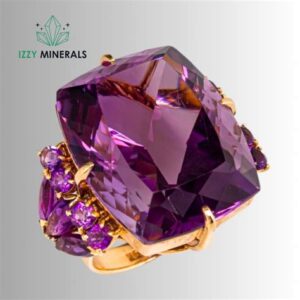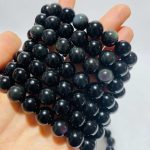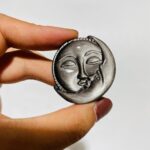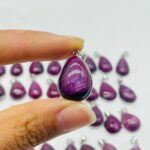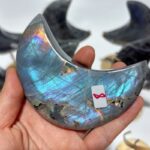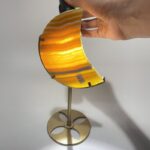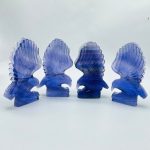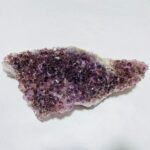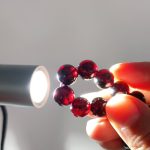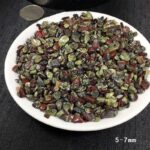Peridot, a captivating light green gemstone, has been revered for centuries for its alluring beauty and purported metaphysical properties. This captivating stone, often associated with hope, prosperity, and growth, has found its way into exquisite jewelry, intriguing spiritual practices, and even intriguing scientific applications.

Origins and Composition of Peridot
Peridot, a member of the olivine mineral group, is primarily composed of magnesium and iron silicate. Its vibrant green hue stems from the presence of iron ions within its crystalline structure.
Peridot is primarily sourced from volcanic rocks known as peridotites, which are typically found in the Earth’s mantle. The United States, China, and Myanmar are among the prominent producers of this remarkable gemstone.
Properties and Characteristics of Peridot
- Color: Peridot exhibits a characteristic light green hue, ranging from pale yellowish-green to deep olive-green. The intensity of its color is influenced by the iron content within the stone.
- Clarity: Peridot is generally transparent to translucent, allowing light to pass through it with varying degrees of clarity. Inclusions are common within peridot, often appearing as tiny, dark crystals or feathery patterns.
- Mohs Hardness: Peridot ranks 6.5 to 7 on the Mohs scale of mineral hardness. This attribute makes it relatively resistant to scratches but necessitates careful handling to avoid damage.
- Crystal Structure: Peridot crystallizes in the orthorhombic crystal system, forming prismatic crystals with a characteristic elongated shape.
- Optical Properties: Peridot exhibits a refractive index of 1.654 to 1.690, contributing to its vitreous luster and brilliant sparkle.
Uses of Peridot
Throughout history, peridot has been employed in various applications, ranging from ornamental to spiritual and even scientific.
- Jewelry: Peridot’s captivating green hue and durability make it a popular choice for jewelry making. It is commonly set in necklaces, rings, earrings, and bracelets, adding a touch of elegance and sophistication to any outfit.
- Spiritual Practices: Peridot has been associated with various spiritual beliefs and practices for centuries. It is said to promote inner peace, attract prosperity, and enhance creativity. Many cultures believe it possesses healing properties, particularly for the heart and solar plexus chakras.
- Scientific Applications: Peridot has garnered interest in scientific fields due to its unique properties. It is used as a gemstone in laser technology, particularly in solid-state lasers. Additionally, peridot is being explored for its potential applications in solar cells and other renewable energy technologies.
Benefits of Peridot
Peridot is believed to offer numerous benefits, both physical and metaphysical.
- Emotional Healing: Peridot is said to promote emotional balance, reduce stress, and alleviate anxiety. It is believed to create a sense of inner peace and tranquility.
- Physical Healing: Peridot is associated with promoting overall physical well-being. It is believed to have a positive effect on the digestive system, liver, and gallbladder. Additionally, it is said to enhance the immune system and boost energy levels.
- Spiritual Growth: Peridot is said to facilitate spiritual growth and self-discovery. It is believed to promote clarity of thought, enhance intuition, and connect one to their higher self.
- Protection and Good Fortune: Peridot is often carried as a protective talisman, believed to ward off negative energies and promote good fortune. It is said to bring prosperity, success, and abundance.
Pros and Cons of Peridot
As with any gemstone, peridot has its advantages and disadvantages.
Pros
- Alluring light green hue
- Relatively affordable compared to other gemstones
- Known for its durability and resistance to wear
- Believed to possess various metaphysical properties, such as promoting emotional balance and attracting prosperity
- Versatile and suitable for a wide range of jewelry and decorative applications
Cons
- Can be susceptible to scratches if not handled carefully
- Inclusions are common within peridot, which may affect its transparency and brilliance
- The availability of larger peridot gemstones can be limited, driving up their cost
- Some individuals may not resonate with the metaphysical properties associated with peridot
Peridot in Various Cultures
Peridot has been treasured by various cultures throughout history, with each civilization attributing unique meanings and properties to the stone.
- Ancient Egypt: The Egyptians believed peridot represented the sun god, Ra, and associated it with fertility and prosperity. They often incorporated peridot into jewelry and amulets.
- Ancient Greece: The Greeks referred to peridot as “the evening emerald” and associated it with the goddess Aphrodite, the symbol of love and beauty. They believed it promoted emotional healing and harmony.
- Medieval Europe: During the Middle Ages, peridot was believed to possess magical properties. It was often used in talismans and amulets to protect against evil spirits and promote good fortune.
- Modern Times: In modern times, peridot continues to be valued for its beauty and purported metaphysical properties. It is widely used in jewelry, spiritual practices, and even scientific applications.
Tables on Peridot
Table 1: Peridot Production by Country
| Country | Production (metric tons) |
|---|---|
| United States | 1,200 |
| China | 900 |
| Myanmar | 600 |
| Australia | 300 |
| Brazil | 200 |
Table 2: Physical Properties of Peridot
| Property | Value |
|---|---|
| Color | Light green to olive-green |
| Hardness (Mohs scale) | 6.5 to 7 |
| Crystal Structure | Orthorhombic |
| Refractive Index | 1.654 to 1.690 |
| Density | 3.27 to 3.4 g/cm³ |
Table 3: Metaphysical Properties Attributed to Peridot
| Property | Benefits |
|---|---|
| Emotional Healing | Promotes inner peace, reduces stress, and alleviates anxiety |
| Physical Healing | Supports digestive system, liver, and gallbladder; boosts immune system and energy levels |
| Spiritual Growth | Facilitates self-discovery, enhances intuition, and connects to higher self |
| Protection and Good Fortune | Wards off negative energies, promotes prosperity, and attracts success |
Table 4: Applications of Peridot
| Application | Purpose |
|---|---|
| Jewelry | Ornamental use in necklaces, rings, earrings, and bracelets |
| Spiritual Practices | Talismans, amulets, and meditation tools to promote healing, protection, and spiritual growth |
| Scientific Applications | Gemstone in solid-state lasers, potential use in solar cells and renewable energy technologies |
| Decorative | Used in sculptures, carvings, and other decorative items |
Frequently Asked Questions
1. What is the best way to care for peridot jewelry?
Peridot is relatively durable but can still be scratched. It should be cleaned with warm, soapy water and a soft cloth. Avoid using harsh chemicals or ultrasonic cleaners.
2. How can I tell if a peridot is genuine?
Genuine peridot typically exhibits a light green hue and a vitreous luster. It is also relatively heavy for its size. You can consult a qualified gemologist for a professional assessment.
3. What is the spiritual significance of peridot?
Peridot is believed to promote emotional balance, attract prosperity, and enhance creativity. It is often associated with the heart and solar plexus chakras.
4. Can peridot be used for healing purposes?
Peridot is said to have a positive effect on the digestive system, liver, gallbladder, and immune system. However, it is essential to consult a healthcare professional for any medical concerns.
Conclusion
Peridot, with its captivating light green hue and purported metaphysical properties, has captivated the hearts of people for centuries. From its use in exquisite jewelry to its applications in spiritual practices and scientific research, peridot continues to fascinate and inspire. While its beauty is undeniable, the potential benefits and meanings associated with peridot make it a truly exceptional gemstone. Whether you seek emotional healing, spiritual growth, or simply a touch of elegance, peridot offers a unique and enchanting experience.

